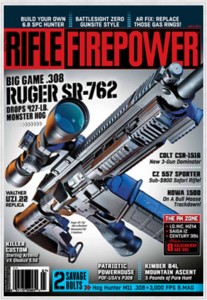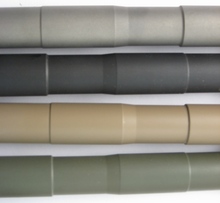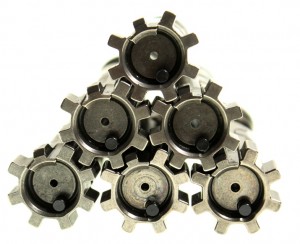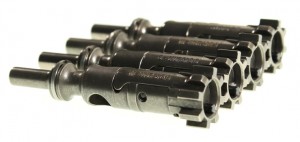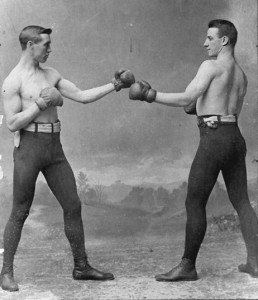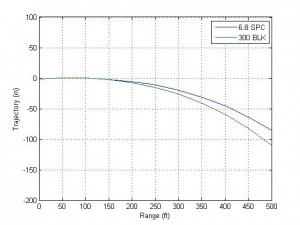The July 2014 issue of Rifle Firepower is on newsstands now, and features a “First Shots” article about a father-son project to build a young hunter his first AR in 6.8 SPC for deer-hunting. Central to the build is one of our 16” 6.8 SPC barrels. The article also features a great discussion on the 6.8 Bison Subsonic Platform. Pick up a copy now or check out the preview HERE.
Forearm Skins – Quality Pics!!
Here are some WAY better pics (Click to enlarge) to show you all the fine detail, fit and finish on our line of skins. These things are just plain comfortable no matter how you slice it, and look great. Follow this LINK to the product page on our store.
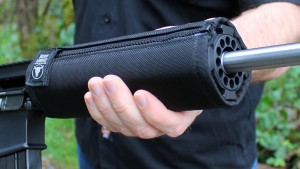
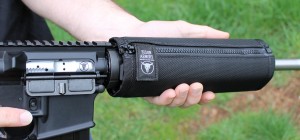
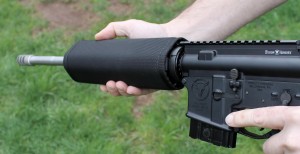
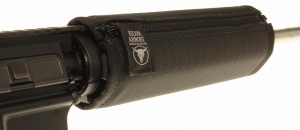

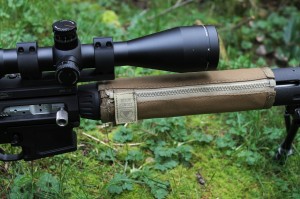
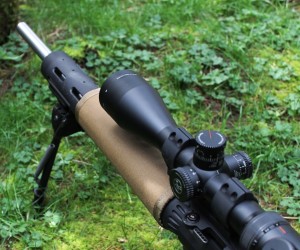
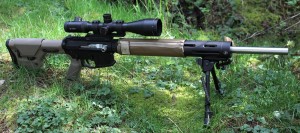
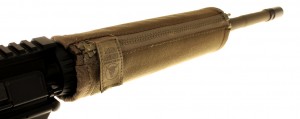
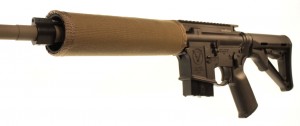
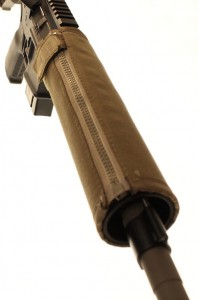
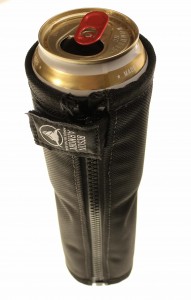
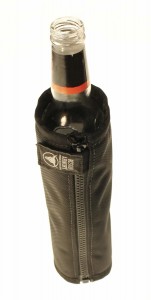
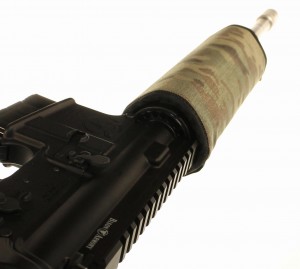
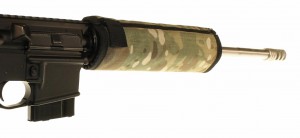
Bison Armory FACEBOOK Page
The Bison Armory Facebook page is alive! Come for the great pics, product information and store updates and stay for the witty banter – CLICK HERE or the icon above to be taken directly to our page.
FOREARM SKINS HAVE ARRIVED
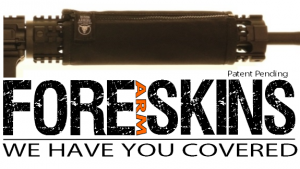 100% Designed & Made in America
100% Designed & Made in America
Free Shipping via USPS Flat Rate Box anywhere in the USA
Bison Armory is proud to introduce its latest innovation: the FOREARM SKIN (Patent Pending) – a flexible but rugged cover that quickly zips securely around the forearm (and any rails) of an AR-15 platform rifle. The Skin’s ballistic nylon and neoprene construction protects the forearm and rails from damage and provides the shooter with unparalleled comfort and utility in all conditions.

WHY A FOREARM SKIN? Anyone who has carried an AR-15 in the field knows the ‘joys’ of handling an aluminium forearm for hours on end. The metal gets cold in the morning, so you wear gloves, which inevitably make your hands sweat. Once in the sun, the forearm absorbs heat and slowly roasts your hands until you put your sweaty gloves back on. And if your forearm has picatinny rails, then it’s either gloves all day or hamburger hands. But gloves don’t protect your forearm and rails from damaging impacts and snags on your surroundings. And exposed metal has a way of going ‘clink’ at just the wrong time. The rail covers currently on the market attach to picatinny rails, so if you aren’t running rails, you’re out of luck. And you can forget about comfort in any case, since the covers are all made of hard polymers. They increase the number of edges and perforations that can snag, while leaving portions of the forearm unprotected and doing nothing to promote sound dampening.
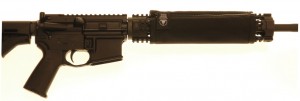
After years of hunting with AR-15s, we thought: “There has to be a better way!” Now there is. Forearm Skins provide a cushioned and insulated layer between you and your forearm, for an always comfortable grip and a streamlined, snag-free profile.
Specifications: All of our skins are 3-4mm thick, but compressible due to their neoprene core, so consider your clearances if you have a scope mounted. All of our Skins are also currently 9” in length. They cover the full length of a mid-length forearm, and partially cover intermediate, rifle and extended length forearms. On forearms longer than 9”, the skin can be positioned to suit the needs of the user in re hand placement and clearance for sling mounts, bipods, etc.
For Quad Rail Forearm compatibilty click HERE for a link to our product page.
For Smooth Tube / Alpha Rail Forearm compatibilty click HERE for a link to our product page.
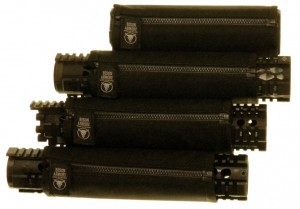
Construction: Forearm Skins are designed and made in the USA. The rugged ballistic nylon surfaces of our Skins enclose a neoprene core. The Skin is fastened with a color-matched YKK molded tooth zipper and a Velcro tab so the zipper-pull doesn’t rattle or snag.
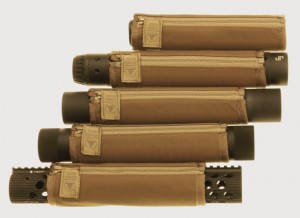
Installation: If you can work a zipper you can install and remove a Forearm Skin. No tools are required for installation or removal, and the Skins work on forearms with or without rails. The Skin fits snugly around the forearm, and will not shift once installed.
Care: Forearm Skins are washable and will not shrink or deform. Mud, blood, whatever – just hand wash with water (and maybe a bit of household laundry detergent) and drip dry.
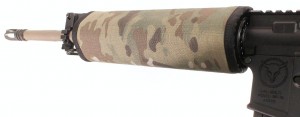
Bison Armory Shim Set Instructional Video
We’ve created a new instructional video that you can use to help with the installation of Bison Armory barrel nut shim sets. You can purchase shim sets at our web store HERE, which will help you get perfect alignment and torque when installing your AR-15 barrel. Our shim set works with any AR-15 barrel nut that requires correct alignment. The instructional video is featured on YouTube and we’ve embedded it below:
New SHIRTS are here!
Our new line of shirts is here just in time for summer – available in sizes Large, Extra Large, and Extra-Extra Large! These are olive green “Hanes Beefy Tee” cotton shirts, with the Bison Armory logo in white on the front, and a 4 color graphic on the back – with the bullets done in proper bullet colors! Here’s a link to the product page: http://bisonarmory.com/bison-armored-shirt/
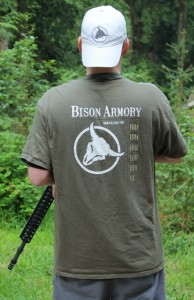
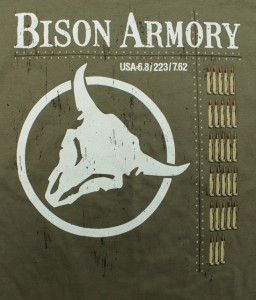

NEW: Bison Armory 16″ .223 Wylde Barrels
Bison Armory is now selling our great shooting .223 Wylde barrels on our web store here. These barrels are made from 416 stainless steel, button rifled with 1:7 twist 6-groove rifling, and have .223 Wylde chambers, which means they handle .223 Remington and 5.56 NATO ammo equally well.

Our current offering is a 16″ Recon profile barrel that is capable of MOA performance. Starting at $160, these barrels can’t be beat on price for performance. These barrels are in stock now and ready to ship.
6.8 SPC vs 300 AAC Blackout – Grudge Match
The latest grudge match in the tactical and sporting rifle world is heating up between two relatively new calibers: 6.8 SPC and the .300 AAC Blackout (“BLK”). We here at Bison Armory evaluated the BLK to see how it stacks up against the 6.8 SPC cartridge. We considered (1) what the BLK offers to the tactical rifle market and (2) whether it does anything better than the 6.8 SPC. Based on these criteria, we came to the conclusion that the BLK underperforms the 6.8 SPC where it really counts. And here’s why:
1. Parts Compatibility with .223 AR-15
Winner: 300 BLK
The 6.8 SPC and BLK both share good parts compatibility with .223 Rem / 5.56 NATO AR-15 rifles. Conversion to 6.8 SPC only requires the install of a caliber specific barrel, bolt, and magazine. BLK conversion, on the other hand, simply requires the install of a caliber specific barrel. Not only does this save a few bucks, but it means BLK rifles are PMag compatible. So the BLK takes this round.
2. Subsonic Rifle Operation
Winner: 6.8 SPC
Unlike the BLK, 6.8 SPC subsonic ammunition does not require both the use of a pistol length gas system and a silencer for your rifle to operate reliably with a 16″ barrel. With a 16″ barrel, 6.8 SPC subsonic ammunition loaded with 200 grain bullets will cycle and lockback the action with a carbine length gas system without a silencer. In high stress situations you want your rig to run whether or not you have a silencer attached. If something happens to your can, or for some other reason you cannot run suppressed, do you really want to be hand cycling your rifle in the heat of the moment? This is clearly an important win for the 6.8 SPC subsonic.
3. Subsonic Ammo Performance
Winner: 300 BLK
The 220 grain and 240 grain 300 BLK subsonics have 10% to 20% more muzzle energy, respectively, than the 200 grain 6.8 SPC subsonic at the muzzle. This is not a huge difference, but the BLK has the advantage.
4. Supersonic Ammo Performance
Winner: 6.8 SPC
Performance in this category is measured in terms of bullet velocity, energy, and drop as functions of range. We will compare the Sierra 115 grain Match King .277 for the 6.8 SPC with the Sierra 125 grain Match King .308 for the 300 BLK for an apples to apples comparison. Bullets are available for both rounds with higher BC’s and so forth, but to keep things simple we’ll work with the Sierra MK bullets. Ballistic coefficients are available directly from Sierra here. These are G1 ballistic coefficients and we’ll stick with that for sake of simplicity.
To start, the 115 SMK .277 has a ballistic coefficient of 0.317 for velocities between 1800 and 2400 fps, and the muzzle velocity of the round is assumed to be a relatively tame 2500 fps. The 6.8 SPC can be driven harder than this but, to be conservative, we’ll stick with 2500 fps out of a 16″ barrel.
The 125 SMK .308 has a ballistic coefficient of 0.338 between 2000 and 2650 fps and 0.330 below 2000 fps. For this comparison the higher BC will be used to give the BLK as much advantage as possible. The muzzle velocity from a 16″ barrel of 2215 fps direct from AAC will be used as well for this comparison.
The following chart shows the muzzle velocity from 0 to 500 yards using the Hornady Ballistics Calculator. 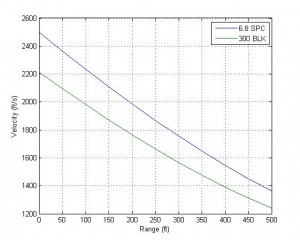
Muzzle velocity by itself doesn’t say much about the performance of a cartridge, except that higher muzzle velocities tend to equate with flatter shooting. So next we will look at bullet drop vs range:
Both rounds are set to 100 yard zeros for comparison. There is not much difference between the trajectory of the two rounds until about 200 yards, at which point the difference in drop is only 2 inches. At 300 yards the difference is 6 inches, and at 400 yards the difference opens up to almost 13 inches. At 500 yards the difference is approximately 2 feet. The 6.8 SPC and 300 BLK are very similar to 300 yards, but past that the 6.8 is clearly superior in terms of bullet trajectory.
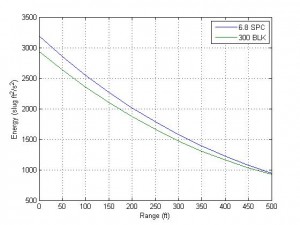 Bullet energy is the best performance comparison of the three metrics considered here. The 6.8 SPC starts at the muzzle with 8.5% more energy than the 300 BLK. This advantage is maintained downrange to 300 yards, and the 6.8 SPC still has 3% more energy than the 300 BLK at 500 yards. Combined with the flatter shooting of the previous figure, which round are you going to want for 3-gun, hunting, or combat/tactical use?
Bullet energy is the best performance comparison of the three metrics considered here. The 6.8 SPC starts at the muzzle with 8.5% more energy than the 300 BLK. This advantage is maintained downrange to 300 yards, and the 6.8 SPC still has 3% more energy than the 300 BLK at 500 yards. Combined with the flatter shooting of the previous figure, which round are you going to want for 3-gun, hunting, or combat/tactical use?
The 6.8 SPC is the clear winner in this category. Who says you can trust my analysis? Apparently AAC does as they quoted my work on page 27 of this document.
5. Ammo Cost and Availability
Winner: Tie
Cost is more or less the same, and there are more varieties of 6.8 SPC available than 300 BLK on Midway USA. However, there is no commercially loaded 6.8 200 grain subsonic yet available, but there will be in the near future. So I call it a tie.
Overall Winner: The 6.8 SPC takes it.
While the 6.8 SPC and 300 BLK each win two of five categories with one category resulting in a tie, the 6.8 SPC won the title for best supersonic ammo performance. Supersonic ammo performance is, in my opinion, a more important category than the others, and where the 300 BLK had victories, the margins were narrow. Therefore the 6.8 SPC wins the grudge match in my opinion. Does this mean that the 300 BLK is a bad round, or that it isn’t an effective round for hunting, competition, or defense? Of course not. Both the 6.8 SPC and the 300 BLK outclass the 5.56 NATO in most categories, and both will serve their users well. Our goal is simply to cut through the hype.
